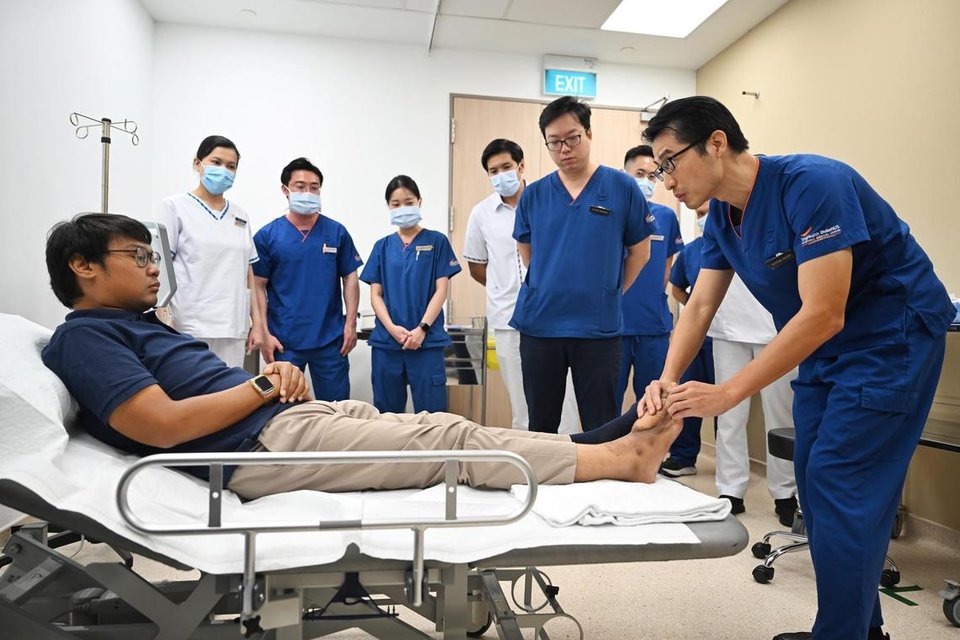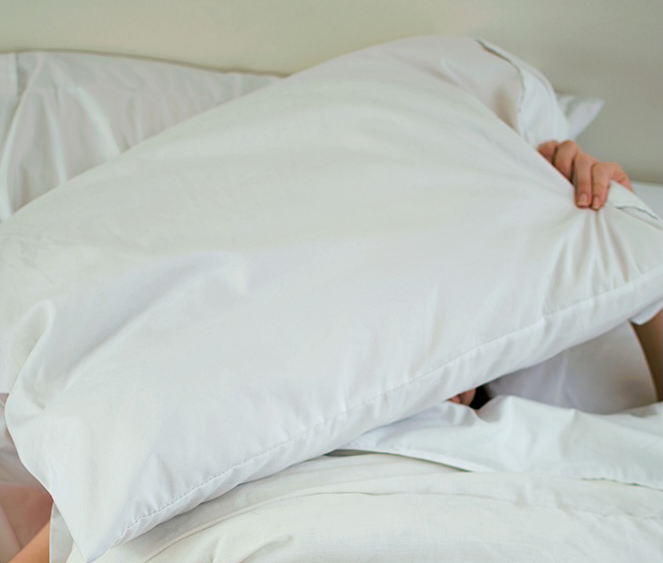Complete hair loss in three weeks: What to know about the causes of alopecia

Published on
06 Apr 2022
Published by
The Straits Times
SINGAPORE - Ms Sunena Gupta was diagnosed with a hair loss condition called alopecia areata when she was just two years old, after her parents noticed small patches of hair loss on her scalp. Initially, they were unnoticeable and easy to cover up.
However, after she turned 16, she started seeing larger patches and a more widespread loss of hair.
"I noticed hair on my pillow in the mornings and more hair loss than usual in the shower. I lost and regrew almost all my hair a few times within a five-year period, says the Singaporean, 24, who is doing her master's degree in public policy at the University of Chicago in the United States.
"Sometimes it was progressive and happened gradually over a year, sometimes it could be so fast that you could have complete hair loss within three weeks."
Alopecia areata is an autoimmune disease in which the body attacks its own hair follicles, leading to hair loss anywhere on the body. It can affect men and women at any age. A person is more likely to develop alopecia areata if he or she has a family history of it.
Dr Madeline Ho, a senior consultant at National Skin Centre, says people with alopecia areata develop an oval or round bald patch most commonly on their scalp. Hair may regrow without treatment but when it does, it may fall out again.
A study published in 2002 in the International Journal of Dermatology showed that the incidence of alopecia areata among 219 Asians in Singapore was 3.8 per cent.
Globally, Dr Ho estimates that the condition affects about 2 per cent of the population.
Spotlight on alopecia after Oscars
Alopecia has come under the spotlight after actor Will Smith slapped Chris Rock at the Oscars last week, over a joke that the comedian had made about the buzz cut Smith's wife sported.
Actress Jada Pinkett Smith, 50, who revealed that she had alopecia in 2018, has spoken publicly about her struggles with the condition on social media.
Alopecia, the umbrella term for hair loss, can be caused by autoimmune diseases, ageing, hormonal changes after pregnancy and chemotherapy, among other things.
Doctors tell The Straits Times that androgenetic alopecia is one of the most common types of hair loss conditions affecting women. It causes a general reduction in the density of hair on the scalp.
Dr Low Chai Ling, founder and medical director of medical aesthetics centre SW1 Clinic, says about half of her female patients have androgenetic alopecia, in which the hair thins over the top and sides of the head, as patients grow older especially after menopause.
"A common cause of alopecia is hormonal changes that occur when a woman ages, hence hair loss starts to appear in women more in their 40s," she adds.
Androgenetic alopecia is also genetic. Dr Alvin Wong, medical director at SKN MediAesthetics clinic, says women are generally more likely to get alopecia at an earlier age if both their parents had early onset male or female pattern hair loss, as compared with those with no family history of it or just one parent with the condition.
Dr Low has also seen female patients with post-pregnancy hair loss. It is also referred to as telogen effluvium and occurs when hormones fluctuate and cause more hair to fall out than usual.
This, Dr Wong says, typically happens three months after child birth and usually resolves in six months. "Some cases, however, do not resolve completely and may take several years to resolve or worsen with subsequent pregnancies," he adds.
About 10 to 20 per cent of Dr Low's patients have alopecia areata caused by autoimmune diseases such as thyroid disorders and anaemia. Dr Wong notes that people affected by autoimmune disorders usually develop alopecia between the ages of 20 and 40.
Dr Low says people who have had chemotherapy, or are taking birth control pills or medication for conditions such as high cholesterol and high blood pressure, have a higher risk of getting alopecia.
Women who often have hairstyles that pull on the hair, such as tight ponytails or braids, or use harsh chemicals on their hair are also more likely to get alopecia.
Hair loss may hit women especially hard
Hair loss, in general, can cause emotional and psycho-social distress, leading to a reduced quality of life.
Dr Ho says: "A person's self-esteem may be affected."
Alopecia can be extremely stressful for women as many associate their femininity with having a full head of hair.
Says Dr Low: "Unlike men who have the option of shaving their heads, the idea of going bald to hide patchy hair loss is less acceptable to women."
Hair loss certainly affected Ms Gupta. She was a sociable and outgoing teenager involved in many activities in school, but when the hair loss intensified, she became withdrawn and was more reluctant to meet people.
"When my parents noticed this, they realised that I had symptoms of depression. They encouraged me to speak to a counsellor in school, who was very helpful," says Ms Gupta, who has two older brothers aged 28 and 30.
Fortunately, she did not get any nasty comments about her hair loss.
"The only remarks I received that I didn't like was excessive curiosity and unwanted medical advice, usually from middle-aged to older generations of people," says Ms Gupta, who is single.
"Long, thick and beautiful hair is often considered to be an inherent part of being a South Asian female and as such, there can be more judgment, pressure and ignorance on this front," she adds.
Dr Wong, who has been treating hair loss conditions for 15 years, sees an average of two to three new patients with hair loss a week. Of these, female patients outnumber male ones by three times.
"From my observation, although more men than women experience alopecia, women are more likely to present themselves for treatment. This is probably because they are more concerned than men about their physical appearance and having hair loss can be stigmatising," he says.
Treatment and prevention
Patients may be given oral medication, medicinal lotions, injections or laser therapy to treat the hair loss.
Having a balanced diet with adequate protein, iron and biotin can help prevent alopecia, says Dr Wong. Biotin is a commonly added nutrient to hair products and can be found in eggs and whole grain such as brown rice and oatmeal.
Apart from counselling, dancing also helped Ms Gupta to cope with alopecia.
In 2018, she created an Indian classical dance performance, titled Umeed: Colours Of Hope, that told the story of a girl dealing with alopecia and mental health conditions.
Presenting such topics, which can often be taboo, through dance goes beyond language and helps people visualise the experience, she says.
Since 2018, she has done more than 25 performances in countries such as Singapore, India and the US.
"It was my own story and I created it with the intent of sharing my experience so it could help others going through similar situations," she says.
Source: The Straits Times © Singapore Press Holdings Limited. Reproduced with permission.
ALL views, content, information and/or materials expressed / presented by any third party apart from Council For Third Age, belong strictly to such third party. Any such third party views, content, information and/or materials provided herein are for convenience and/or general information purposes only. Council For Third Age shall not be responsible nor liable for any injury, loss or damage whatsoever arising directly or indirectly howsoever in connection with or as a result of any person accessing or acting on any such views, content, information and/or materials. Such third party views, content, information and/or materials do not imply and shall not be construed as a representation, warranty, endorsement and/or verification by Council For Third Age in respect of such views, content, information and/or materials.







